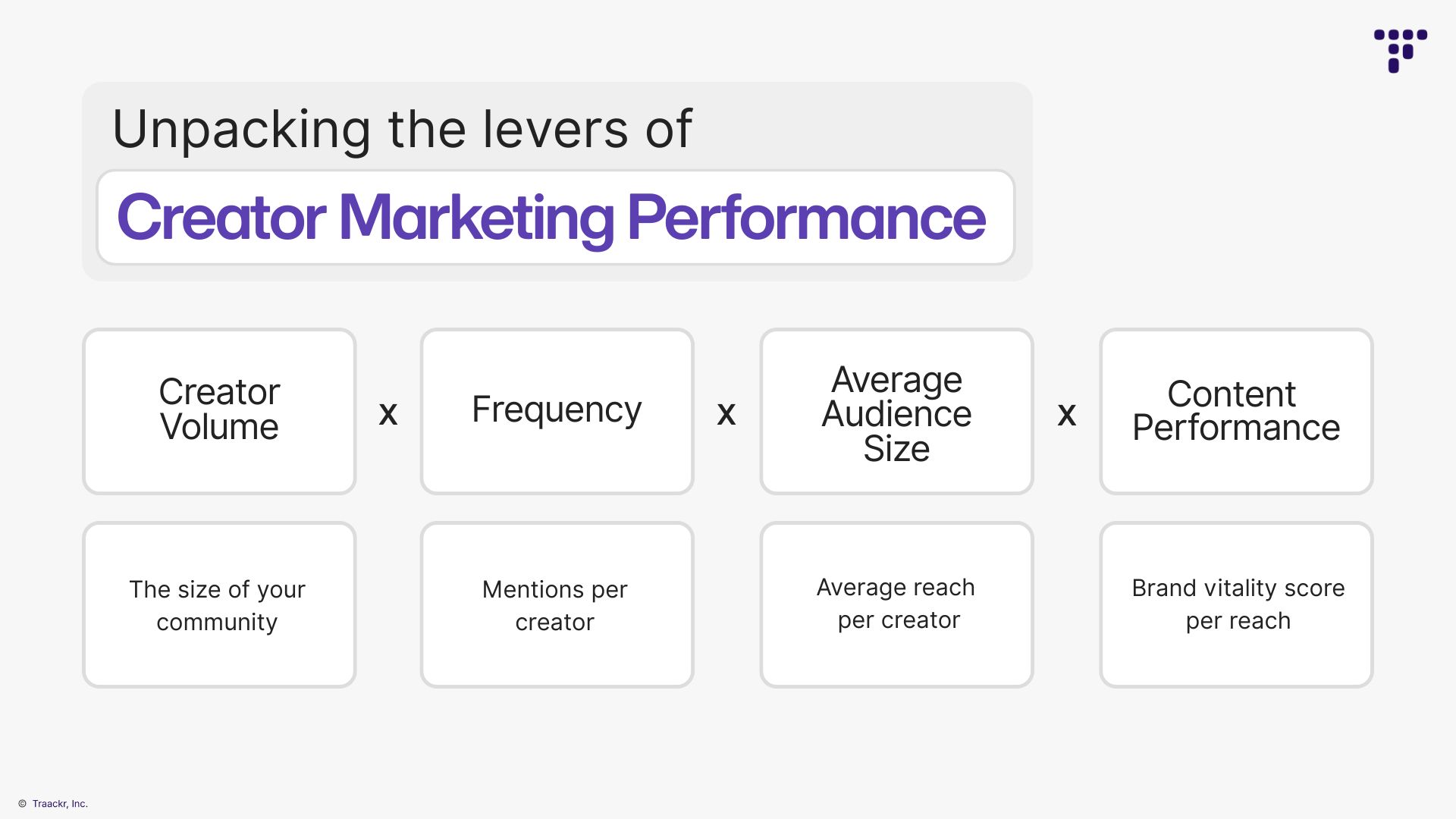
For marketers, the pressure to make budgets work harder keeps growing.
With economic volatility, shifting tariffs, and rising platform costs, brands of all sizes are rethinking their approach to creator marketing. It’s no longer about spending more. It’s about spending smarter.
Tariffs aren’t directly cutting influencer budgets, but they are shrinking overall marketing spend. That creates the same challenge everywhere: deliver more with less.
“[Brands] need to do more with their existing budgets,” said Taylor Rodriguez, global VP of customer experience at Traackr.
That’s the pattern Traackr is hearing from clients across industries.
To show a clear return on creator investments, brands need to understand what’s working and what isn’t. But optimizing spend is only part of the equation. The real challenge is balancing performance with brand integrity and community building.
Here are two ways brands are adapting.
1. Setting Benchmarks to Move Beyond Vanity Metrics
Nearly every brand is working with creators, but many are still unsure how to measure success. A Traackr and Glossy survey found that about one-third of marketers didn’t know how influencer ROI compared to other strategies. Another third didn’t know how it had changed over time.
That uncertainty has pushed more brands to build internal benchmarks. Instead of chasing impressions or follower counts, they are focusing on performance indicators like frequency, cost per view, and engagement.

“Benchmarks let you audit past campaigns, but they also help you budget and plan smarter for the future,” said Sarah Davis, senior professional services consultant at Traackr. “You can bake those insights into the next campaign instead of starting over every time.”
According to Sarah Ngoma, senior professional services consultant at Traackr, many brands are also developing internal systems to vet creators and track what performs. That includes clearer metrics for creative quality and efficiency.
This helps brands identify strong content, cut low-performing partnerships, and reinvest in what drives results.
2. Boosting Creator Content with More Precision
Not every brand can afford Hailey Bieber. That’s one reason more teams are turning to paid amplification of creator content, especially from micro-influencers.
“Brands are moving beyond organic reach,” said Adrienne Springer, senior professional services consultant at Traackr. “If they’re already investing in great content, they want to make sure it reaches the right audience.”
Boosting lets brands tailor who sees the content based on language, interests, location, or demo. Rather than relying on one big influencer with a mixed audience, teams can spend more efficiently by targeting exactly who they want.
Springer added that it depends on the outcome brands want. A creator may have a million followers, but what matters is whether the brand wants to reach women, students, English speakers, or a combination. That targeting influences budget decisions.
Traackr gives you the full picture: benchmarking tools to track brand performance, and AI-powered detection that shows when competitors are using paid media to boost content
With so many beauty and fashion brands competing for attention, breaking through comes down to precision. It’s not about spending less. It’s about knowing exactly where your money works hardest.
Smart brands are not pulling back. They are investing more intentionally, with a clear understanding of:
• Who drives impact
• What content performs
• Where to focus next
Traackr gives brands the tools to track performance, benchmark success, and invest with confidence.